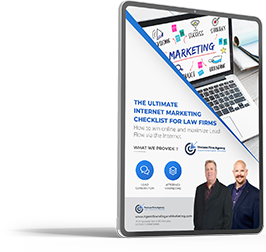When your site performs optimally, there is no better tool for driving new business. It is the “always on” machine that continues to drive sales even when your insurance office team are sleeping. But, just because you have a freshly created website, it doesn’t mean the sales will begin rushing in automatically.
Like a newly built store, you slowly add the fixtures and trappings that entice people in and encourages them to buy from your website. You need to hang the right signs, offer your products in an enticing way, and make it easy for people to buy.
Unlike most physical stores, however, your website will not have a handy salesperson standing by. That is why you need to pay close attention to all the elements on your site; the path that prospects take to buy your insurance product. Weaknesses in any part of the process could impede your conversion rates. Here are four common areas where your insurance agency website conversion rates could fall short.
No Clear Value Proposition
This may be the single most important factor in your website’s potential to convert visitors. There is a natural inclination to focus on things like page layout or site font and colors, but none of that matters if you have no clearly defined value proposition.
What is a value proposition? It is your communique that explains how your products and services solve prospect’s problems: It is the primary reason that people should buy insurance products through your agency. A clear value proposition speaks directly to your ideal customer and answers two important questions in their mind, “What’s in it for me? And “Why buy from you?”
Crafting the ideal value proposition takes time and some degree of trial and error. You need to reflect on what makes your agency unique. Then, you must communicate that message clearly and efficiently. It is unlikely that your value proposition will hit the sweet spot on the first attempt. You will need to run A/B tests on different versions to see which one resonates with your audience and yields the best conversion rates.
Ineffective Sales Funnel
The term “sales funnel” is synonymous with shady affiliate marketers coaxing unsuspecting customers down an increasingly expensive spiral of unnecessary purchases. The idea is that the top of the funnel has a reasonably priced product to entice the customer to open their wallets. As they enter the funnel with that initial purchase, they are presented with more tempting offers at a higher price.
While the term “sales funnel” has been somewhat tarnished, the concept is still important. Without a proper sales funnel for your agency website, it’s hard to maximize conversions. You may, for example, be asking for the sale too early, or not at all. For an expensive purchase, such as insurance, people need time to make up their minds. Likewise, when they have decided to buy, they need to be shown what to do.
Think of your sales funnel as guiding your prospects along the way. At the start, you give them basic information about your products and services in the form of blog posts and articles. Then, as they become aware and interested, you show them more in-depth content such as eBooks and case studies. Finally, you offer the sale, signup, or whatever action you want the prospect to take.
{{cta(‘2a110d37-99f6-40f9-907a-1cf0176c5856′,’justifycenter’)}}
Poor Website Design
There are many things to consider when having a website designed for your insurance agency. That includes obvious things like page layout, color schemes, and text font. But, many complex aspects also play a role in people’s perception of your business, and thus the sites ability to maximally convert prospects into customers.
An often overlooked aspect of website design, for example, is page hierarchy. Having plenty of useful content on your site is important, but how is that information organized? A complex page hierarchy makes it difficult for people to navigate your site and many are likely to abandon the process. A good rule of thumb when setting up your website is to ensure that visitors can get to where they want to go in three clicks or less.
Other things to consider when designing the website include the placement of call-to-action buttons, page load times, and avoiding the use of large blocks of text.
Not Enough Trust Signals
While most people are comfortable doing business online, some reassurance is still required. Someone visiting your website for the first time will not instinctively feel confident making a commitment to your business; whether that be a commitment to read your content, check out your offer, or make a purchase.
You need to pepper your website with quality trust signals. That means having prominently displayed contact details, plenty of social proof, and regularly updated content. Making it easy for people to get in touch with you is not only a good way to drive more business inquiries, but it also instils confidence in website visitors. They will feel secure knowing that if they run into any issues, they can send you an email or call on the telephone.
Social proof can come in the form of testimonials, blog post comments, or by displaying the number of followers your agency has on social media. It reassures new website visitors that others are interacting with your business and it is probably safe for them to do the same. If you have a blog or news section on your site, you should also ensure it is kept up to date. If not, people may think that you have abandoned the website.
Having a well-optimized website with all the right elements in place will mean a steady supply of clients for your insurance agency. Make sure that your primary driver of business is suitably set up for optimal conversion rates. Remember, to find the sweet spot for conversions you will need to A/B test all the important elements.






